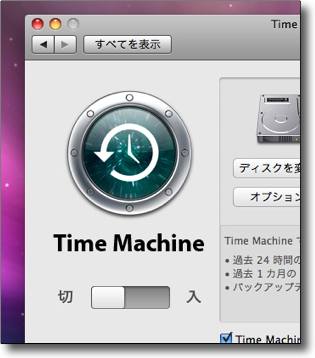

You can ‘unstick’ the exclusion by using the above addexlusion command with the -p flag added. To view an item’s exclusion, navigate to the item’s parent directory then enter: ls Creating a ‘Traditional’ Exclusion This means that the exclusion property permanently stays with the physical file. The reason for this, is because tmutil adds the exclusion to the metadata of the item excluded, instead of modifying a plist file. This means that the item you exclude remains in the Time Machine exclusion list even if you move it, this behaviour does NOT occur when you exclude items from the Time Machine preference pane. This command is what we like to call ‘Sticky’. The tmutil addexclusion command excludes items in a slightly different way to using a plist file. To remove the exclusion, the command is: sudo tmutil removeexclusion Then the path to the file or folder in question. To verify that the exclusion has occurred, you can use the command: sudo tmutil isexcluded Remember, anytime you use the ‘sudo’ command, you will be asked to authenticate as an admin to make this change. Then the path to the file or folder you wish to exclude.įor example, to exclude my Downloads folder from Time Machine backups, I would enter: sudo tmutil addexclusion ~/Downloads Open the terminal application, located in /Applications/Utilities and enter: sudo tmutil addexclusion Unlike the Finder, the command line is not forgiving with regards to typos and mistakes. If you have not used the command line before, be very careful when entering commands into the Terminal. You can also configure exclusions using the command line which could be useful to system administrators who require a remote way to configure Time Machine.
#Timemachinescheduler how to
Hugo showed you in episode one how to exclude certain files and folders from your Time Machine backups using the Time Machine preference pane.
#Timemachinescheduler password
If you simply want to add encryption to an existing Time Machine backup, all you need to do in Time Machine Preferences, is reselect your backup drive after clicking the ‘Select Disk’ button and tick ‘Encrypt backups’, supplying a password and password hint when requested. Then click ‘Use Disk’ and again enter a Secure Backup password and enter in a Password hint to help you remember this password should you forget it.Ĭlick on the ‘Encrypt Disk’ button to start the encryption process. You can therefore also encrypt your backups here by checking ‘Encrypt backups’ when selecting the backup drive you want to use for backups. Please note, there is no way to recover the data if you forget this Backup password!Ĭlick on the ‘Encrypt Disk’ button when you are ready to start the encryption process.Įpisode One showed you how to manually setup Time Machine using the Preference Pane. You’ll then be asked to enter a Secure Backup password and enter in a Password hint to help you remember this password should you forget it. When you connect up an new external hard drive to your Mac, it will automatically ask you if you want to use it to back up with Time Machine.Īll you need to do is to Check the ‘Encrypt Backup Disk’ check-box and then Select ‘Use as Backup Disk’. Encrypted BackupĪ nice addition to Time Machine in 10.7 and 10.8 is the ability to encrypt your backup drive to increase the security of your backups. – And lastly, we will look at how to Delete Time Machine backups via the command line. – How to setup a size limit for Time Machine backup volumes. – How to toggle Local Snapshots on and off. Since this is the final episode in this podcast series, I’ve decided to give you a couple of bonus treats, and also cover some other features I think you will find useful. – And an advanced way to change the schedule times for the backups. – How to prevent New Disks being offered automatically For Backup. – How to manually modify the exclusions list. In this 3rd podcast, we will be looking at some advanced features such as: Pete took us through how to recover data in the second episode.
In the first episode, Hugo looked at Time Machine configuration and managing Time Machine backups.
#Timemachinescheduler series
My name is Russ, and today I will be taking you through the 3rd and final episode of this series about Time Machine in 10.8.
Hello and welcome to the Amsys Training Podcasts.


 0 kommentar(er)
0 kommentar(er)
